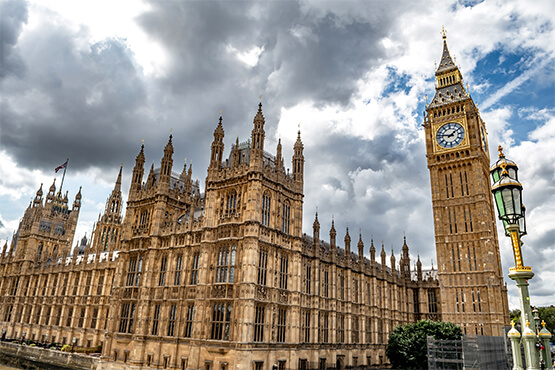Sequencing
The White Paper made it clear that the Government’s main priority remained devolution. This was also re-emphasised in the letter to Councils from John MacMahon on 16 December 2024. However, more recent events suggest this is true only to an extent.
The Government has now announced the areas included in the Devolution Priority Programme which are being fast tracked to create new CAs and CCAs. Four of six of these include areas where two-tier government is part of the picture and so they are also being supported to deliver local government reorganisation on an accelerated timetable. These areas will have CCAs in place by early 2026, with Mayoral elections in May 2026; and shadow unitary authority membership being elected also in May 2026, and vesting day for the new unitaries likely in April 2027.
The Government has also now written to other areas where two-tier government remains. Some of these areas are already within CAs or CCAs, but many are not. These areas are being asked to put forward formal proposals for the creation of unitary councils by 28 November. We understand the intention is then for those areas to undertake shadow elections in May 2027, and vesting day for those new unitaries to be in April 2028.
Where those areas also need to join CAs or CCAs we are predicting that they will be invited to work with the Government to work towards Mayoral elections in May 2027, with new CCAs coming into existence in early 2027.
So, except for areas in the priority programme, whilst the creation of a new CA or CCA may happen before unitisation takes place, agreement on unitisation and possibly Government decisions on it will happen before devolution proposals are brought forward.
There are some areas where unitaries already exist but there is not a combined authority in place currently. Again, we would anticipate proposals being invited from these areas later in 2025, for first Mayoral elections in May 2027. It would be possible in theory for elections to be sooner in these areas, but we anticipate there to be capacity issues for the Government in progressing too many sets of creation of devolved arrangements and local government reorganisation at once.
So, leaving aside the priority areas where timetabling is now set, we anticipate timing being along these lines:
Two-tier areas already in CAs or CCAs: proposals by 28 November 2025, shadow elections May 2027; vesting day for new unitaries in early 2028.
Two-tier areas also needing to become part of a CCA: proposals for unitisation by November 2025, proposals for CCA by early to mid 2026, creation of new CCA by early 2027, shadow elections for new unitaries and for Mayor for CCA in May 2027 and vesting day for new unitaries in early 2028
Unitary areas needing to become part of a CA: proposals for a CA by early to mid 2026, creation of new CA by early 2027 and elections for Mayor in May 2027.
However, there may be more than one further wave of activity as if all areas requiring local government reorganisation, and new strategic authorities were to proceed on the timetable above, this would see six new CAs/CCAs in early 2026, roughly seven new CAs/CCAs in early 2027, unitaries covering seven current county areas coming into existence in 2027 and, unitaries covering a further 13 current county areas coming into existence in 2028. This feels like a very ambitious workload for Government to absorb.
However, what is clear is that the Government means business on both devolution and LGR, seeking as it is interim proposals from all two-tier areas by 21 March 2025; and continually restating its commitment to devolution.
Size and geography
There is a clear policy view in the paper that larger local authorities have more chance of surviving and thriving. There is therefore a requirement that new unitary councils will be more than 500,000 people, and new strategic authorities more than 1.5 million (so essentially formed of at least three unitaries). We are aware of areas where proposals are being advanced which do not meet these size targets. Where this is the case, we would suggest that it will be very important to have other reasons related to functional economic geography, alignment with other public sector boundaries, or identity to persuade the Government that the smaller size is sustainable and sensible.
The question of geography is an interesting one. With parts of the country already covered by strategic authorities, there is a necessity to close the existing gaps, meaning that new proposals coming forwards have to “fit” with one another with ‘no gaps and no overlaps’. It seems unlikely that this will be entirely achieved with a bottom-up approach, and hence the powers of compulsion anticipated may be used to forcibly close the remaining gaps. Arguably therefore it makes sense, even if areas are not in the priority programme, to seek agreement with surrounding areas and actively make proposals as doing so may mean greater scope for the Government to give what is asked for on geography (and essentially leave any gaps to be closed, down the line).
There is also the option for existing strategic authorities to take in additional geographies and for some areas which are close to existing strategic authorities this may be attractive. We suspect that the Government will generally respect the wishes of existing strategic authorities on this issue however, so if an area does have aspirations to join existing strategic authorities, we would suggest that those authorities are approached early.
Equally, in relation to local government reorganisation, most of the discussions we are aware of seem to contemplate creating one or more unitary authorities on the same boundaries as, or within the boundaries of, existing county councils. Whilst the Government has indicated that that will ordinarily be the case, it has also signalled that it is open to proposals with other councils which currently fall outside of their county. Such proposals may however be regarded as more challenging by Government, particularly if they will pull against other public authority boundaries (although clearly the opposite can also be true with new boundaries improving contiguousness with other public authorities).
Consent and consensus
As stated above, the creation of a new CCA will require the consent of all the upper tier councils in the area that it covers. In contrast, local government reorganisation does not require the consent of all the councils in the area (of whatever level), only that a proposal is made which the Secretary of State decides to implement.
The White Paper made it clear that areas where consensus had been achieved would be prioritised and that has proven to be the case. Whilst there is an indication in the paper that powers of compulsion will be introduced through the English Devolution Bill for devolution, and to require proposals to be made for local government reorganisation, these will not be available imminently.
Accordingly, for now, if areas decide not to make proposals for CAs or CCAs, or for local government reorganisation on the timetable proposed by Government this cannot be compelled. However, with the Government apparently anticipating the English Devolution Bill being in force during 2026, it will only be a matter of time before that can be achieved.
Even now, as long as a Council in an area makes a proposal for local government reorganisation the Government can progress such a proposal without needing the consent of all Councils. (Though that is not the case the creation of CAs/CCAs where all Councils currently need to consent).
Government approach and priorities
As we predicted, the areas in the Devolution Priority Programme are those areas where a high degree of consensus (at least on devolution) exists. This is clearly so that Government can achieve some easy ‘wins’. However, as elections have been postponed in the areas covered by the Devolution Priority Programme there will now be an imperative on those areas to progress devolution arrangements, and, where relevant, local government reorganisation proposals, at a very accelerated pace to achieve the May 2026 deadline. We anticipate that hitting relevant deadlines will be a significant undertaking.
Areas not in the Devolution Priority Programme but which are two-tier areas have been asked to submit proposals for local government reorganisation by 28 November 2025, so again, progress on seeking consensus does need to be made fairly quickly.
We would also suggest that areas not covered by a CA or CCA, and not in the priority programme, should continue discussions about devolution arrangements in their areas as we anticipate that Government will be looking for another wave of areas to become CAs or CCAs in early 2027.
Next steps
The areas in the Devolution Priority Programme are working to an ambitious and challenging timetable. Those areas should rapidly establish joint working protocols across councils, and secure sufficient resource (whether internal or external) to deliver the programme at pace.
Other areas requiring local government reorganisation need to submit proposals by 28 November so again, need to work with other councils in their area, to work out the best approach for their areas. A well thought through proposal which has a high degree of consensus is much more likely to be attractive to MHCLG than multiple competing proposals which they will need to sit in judgement on.
You may be interested in...
Published Article
Devolution revolution?
Legal Update
The Homelessness and Social Housing Allocation (Wales) Bill: Can it really end homelessness in Wales?
Legal Update
Independent Water Commission report: Understanding key recommendations
Legal Update
A new planning bill for Wales: What will this mean?
Legal Update
Consultation on proposed changes to Estyn inspection regime in Wales
Press Release
Browne Jacobson appointed to Adra legal framework as housing association launches 2030 vision
Press Release
Browne Jacobson reappointed to Welsh Government Commercial Division panel
Legal Update - English devolution
Practical guide to the English Devolution Whitepaper
Press Release - English devolution
Comment on English devolution white paper
Press Release
King’s Speech 2024: Reaction from Browne Jacobson lawyers
Legal Update
The Air Quality and Soundscapes (Wales) Act 2024: How might the Act affect local authorities in Wales?
Press Release
Browne Jacobson supports establishment of East Midlands Combined County Authority
Press Release
At the forefront of society’s biggest issues - a reflection of our public sector work throughout 2023
Press Release - Firm news
Browne Jacobson bolsters presence in Wales with three new appointments
On-Demand
Practical Public Law Practice in Wales - The Welsh Admin Court and legitimate expectation
Press Release
Browne Jacobson’s public law team recognised in Wales Legal Awards 2023
Press Release
Browne Jacobson announces appointment of Barrister to its Cardiff office
Legal Update
Browne Jacobson grows Cardiff team with two new appointments
Press Release
Browne Jacobson advising the Welsh Government on the delivery of significant number of renewable energy projects
Press Release - #BeingBrowneJacobson
Our new office in the heart of Cardiff city centre
Opinion
Is over centralisation hindering economic growth?
Legal Update
The Retained EU Law
Created at the end of the Brexit transition period, Retained EU Law is a category of domestic law that consists of EU-derived legislation retained in our domestic legal framework by the European Union (Withdrawal) Act 2018. This was never intended to be a permanent arrangement as parliament promised to deal with retained EU law through the Retained EU Law (Revocation and Reform) Bill (the “Bill”).
Legal Update
Significant intervention by Senedd Environmental Committee
A Senedd committee has made a significant intervention in relation to post-Brexit environmental protection arrangements in Wales.
Legal Update
Welsh Human Rights Bill: A parting of the ways?
The Welsh Government has published a report setting out a blueprint for devolution of justice and policing in Wales that pulls no punches in making the case for taking greater control from Westminster.
Legal Update
The Introduction of the Social Partnership and Public Procurement (Wales) Bill by the Welsh Government
Legal Update
Changes to the statutory framework for local government in Wales
The Local Government and Elections (Wales) Act 2021 (“the Act”) establishes a new and reformed legislative framework for Welsh local government elections, democracy, governance and performance. Many of the most significant changes contained in the Act came into force earlier this month.
Published Article
Building systems – the lessons to be learned
At Browne Jacobson, we have been working with NHS and local government bodies at national and more local levels on this system reform, and so this is a question we’ve been working to answer for some time.
Press Release
Browne Jacobson’s energy & infrastructure specialists advise Welsh European Funding Office on major tidal renewable energy project
Browne Jacobson’s specialist energy & infrastructure lawyers have advised the Welsh European Funding Office (WEFO) on a significant £31m funded tidal energy project, located in Anglesey, off the North West coast of Wales.
Legal Update
Aarhus legal costs in environmental claims
Legal Update
Wynne-Finch and others v Natural Resources Body for Wales [2021] EWCA Civ 1473
Historic exceptions of mines and minerals did not include mudstone, the common rock of the district.























